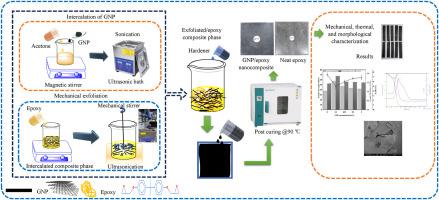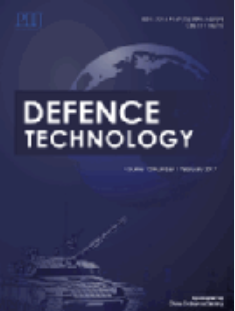Innovative dispersion techniques of graphene nanoplatelets (GNPs) through mechanical stirring and ultrasonication: Impact on morphological, mechanical, and thermal properties of epoxy nanocomposites
IF 5
Q1 ENGINEERING, MULTIDISCIPLINARY
引用次数: 0
Abstract
Graphene nanoplatelets (GNPs) have attracted tremendous interest due to their unique properties and bonding capabilities. This study focuses on the effect of GNP dispersion on the mechanical, thermal, and morphological behavior of GNP/epoxy nanocomposites. This study aims to understand how the dispersion of GNPs affects the properties of epoxy nanocomposite and to identify the best dispersion approach for improving mechanical performance. A solvent mixing technique that includes mechanical stirring and ultrasonication was used for producing the nanocomposites. Fourier transform infrared spectroscopy was used to investigate the interaction between GNPs and the epoxy matrix. The measurements of density and moisture content were used to confirm that GNPs were successfully incorporated into the nanocomposite. The findings showed that GNPs are successfully dispersed in the epoxy matrix by combining mechanical stirring and ultrasonication in a single step, producing well-dispersed nanocomposites with improved mechanical properties. Particularly, the nanocomposites at a low GNP loading of 0.1 wt%, demonstrate superior mechanical strength, as shown by increased tensile properties, including improved Young's modulus (1.86 GPa), strength (57.31 MPa), and elongation at break (4.98). The nanocomposite with 0.25 wt% GNP loading performs better, according to the viscoelastic analysis and flexural properties (113.18 MPa). Except for the nanocomposite with a 0.5 wt% GNP loading, which has a higher thermal breakdown temperature, the thermal characteristics do not significantly alter. The effective dispersion of GNPs in the epoxy matrix and low agglomeration is confirmed by the morphological characterization. The findings help with filler selection and identifying the best dispersion approach, which improves mechanical performance. The effective integration of GNPs and their interaction with the epoxy matrix provides the doorway for additional investigation and the development of sophisticated nanocomposites. In fields like aerospace, automotive, and electronics where higher mechanical performance and functionality are required, GNPs' improved mechanical properties and successful dispersion present exciting potential.


通过机械搅拌和超声波处理石墨烯纳米片 (GNP) 的创新分散技术:对环氧纳米复合材料形态、机械和热性能的影响
本文章由计算机程序翻译,如有差异,请以英文原文为准。
求助全文
约1分钟内获得全文
求助全文
来源期刊

Defence Technology(防务技术)
Mechanical Engineering, Control and Systems Engineering, Industrial and Manufacturing Engineering
CiteScore
8.70
自引率
0.00%
发文量
728
审稿时长
25 days
期刊介绍:
Defence Technology, a peer reviewed journal, is published monthly and aims to become the best international academic exchange platform for the research related to defence technology. It publishes original research papers having direct bearing on defence, with a balanced coverage on analytical, experimental, numerical simulation and applied investigations. It covers various disciplines of science, technology and engineering.
 求助内容:
求助内容: 应助结果提醒方式:
应助结果提醒方式:


